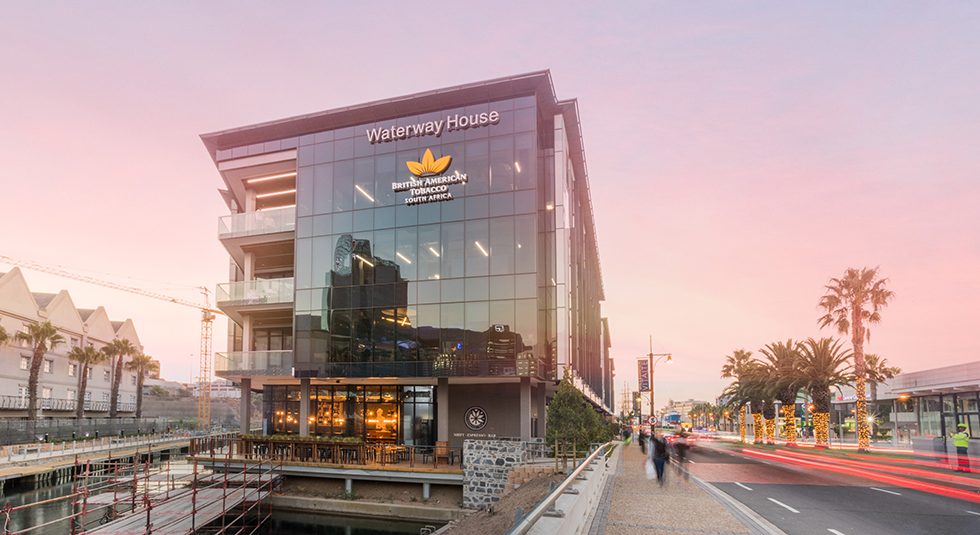Even in New York, the city with arguably the planet’s most diverse and dynamic food scene, the three days of the Summer Fancy Food Show stand out as a world-class pileup of cuisines and trends. African honeys endorsed by Jane Goodall, Indian spiced sodas, Dubai chocolates and protein-packed … everything were but a few of the thousands of products laid out to tempt buyers and distributors for grocery and gourmet stores.
If you want a window into America’s changing tastes and growing appetites, and a sense of how the country will be eating in the coming year, there’s no better place to be.
ADVERTISEMENT
CONTINUE READING BELOW
For me, no moment crystalized the show’s fantastical culture clash better than when I grabbed a sample of Korean carbonara-flavored ramen (ramen is a multibillion-dollar industry there) from one exhibitor and walked straight into a nearby crowd watching rapt as an opera-singing Italian chef dramatically transferred servings of his own carbonara from pan to plates, handing each one to an assistant who shaved black truffles over them before giving them away.
When I last reported from the Fancy Food Show in 2023, it featured 2,000 companies exhibiting over about 300 000 square feet. This year it’s swelled to 2 500 companies (400 of which were first-timers) taking up 340,000 square feet. It’s the biggest show in nearly a decade, reported Bill Lynch, president of the event’s organiser, the Speciality Food Organisation.
Sales of speciality foods—think gourmet chocolates, cheeses, snacks and meats—are projected to grow 5.5% this year, according to the 2025 Speciality Food Industry Outlook Report, with “wellness”-oriented products being a key driver. That can mean lower sugar content (72% of Americans are seeking to limit sugar intake) or increased and more diverse sources of protein. But beneath this expected growth is a current of economic uncertainty, with 53% of US consumers expressing “mixed feelings or pessimism about the economy.”
Indian accents
One of the year’s standout flavour trends has been in Indian-influenced snacks, said Jessie Kimsey, senior manager for vendor strategy & category innovation for online grocer Misfits Market Inc. “We’ve seen salty snacks as a whole trending down, so I think brands are looking towards ways to make it more exciting and bring people back into the aisle,” she said.
Look no further than the excitement generated by startups such as Keya’s Snacks, which offered a pair of flavoured potato chips: a complex Bombay Spice, and Kala Namak, the kiln-fired black salt, whose sulfurous notes evoke fried eggs. Along with samples, it offered up booklets titled Zen and the Art of Eating Chips: An Earthling’s Cultural Guide to Consumption and Gratification—Potato Chip Edition. Niranaya Foods from Philadelphia offered pretzels made from grain-free naan in flavours like Tandoori BBQ, Pink Salt and Jalapeno Chutney. And Doosra snack mix, which made a splash last year with its blend of spiced chickpea puffs called boondi, roasted peanuts and caramelised white chocolate, was back with an equally moreish mix of boondi, dark chocolate and walnuts.
Indian flavours permeated more than just the crunchy aisles. Sach, the Bay Area paneer maker, introduced a new frozen pizza line in flavors like tikka masala, while Bollygood’s small stand was busy offering tastes of its reduced-sugar take on nimbu pani, Indian sparkling lemonades and limeades, flavored with fruit, spice and a pinch of salt to enhance hydration.
Bollygood’s founder and CEO, Maxine Henderson, a former electrical engineer, was pleasantly surprised that the New York crowd gravitated toward the lime-basil-cumin flavoured drink—the foundational one based on her grandmother’s recipe—even more than her bestsellers, lemon-pomegranate-cardamom and lemon ginger. “These global flavours and functional ingredients are desired,” she said. “There’s been a demand, and retailers are seeing that.” Henderson came to the show looking to connect with both sellers and investors: “We’re ready to scale. We need some smart money to help us grow a business.” As she was pouring the last of her samples, she said the results of the show “exceeded my expectations.”
Bollygood’s nimbu pani wasn’t the only surprising sip of the show. Narichan introduced Kimchi Me, a kombucha-like drink made from white kimchi brine. Although it was a bit too intense to chug after a run, it would be a perfect addition for a dirty martini or bloody mary. Over in the sprawling Italian pavilion, Emilia-Romagna’s Terra del Tuono also featured an unusual beverage base—balsamic vinegar—in its Emilio sparkling aperitif, which balances the tartness with concentrated grape must.
Cut down to GLP-1 size
Among Kimsey’s other takeaways is the continued strength of “little indulgences and sweet treats.” She sees “poppable format” snacks like Unreal’s “snacking chocolates,” as she calls them, fulfilling a newly relevant need in a market where GLP-1 treatments have curbed appetites but not desire. “You aren’t opening up a pint of ice cream and just diving in. You’re actually like, ‘I just want like two, and then that’ll tide me over.’” A favourite example was Baris, frozen chocolate-dipped raspberries from Patagonia (the place, not the brand), which she likens to a “high-end, luxury gusher experience.”
Rahul Sharma, director of marketing and partnerships at Source M, a packaging specialist, noticed that “more and more brands are adding more protein to still be relevant in the GLP-led diet.” Indeed, Barilla and Rummo prominently featured protein-packed pastas, while pizzas, chips, ice creams and even sprinkles were touting their protein premiums. In one of the show’s better examples of trend synergy, Alak Vasa, a former algorithmic trader turned owner of Elements Ayurvedic Chocolates, introduced a chai-spiced protein powder, flavoured with (among other things) cinnamon, cardamom, black pepper and cacao.
Raising the Dubai Bar
The biggest trends at the Summer Fancy Food Show Dubai, Dubai, Dubai. Image: Matthew Kronsberg/Bloomberg
ADVERTISEMENT:
CONTINUE READING BELOW
When asked to sum up the biggest trends she saw, Melanie Bartelme, an associate director for food and drink at marketing intelligence firm Mintel, offered up three words: “Dubai, Dubai, Dubai.” Indeed, the viral pistachio-and-shredded-phyllo-filled chocolate seemed only to be gaining momentum, despite skyrocketing cacao prices. Italian pastry producer Don Giovannino was serving up slices of holiday panettone flavoured with the stuff, while Just the Fun Part, maker of poppable-format chocolate-filled waffle cone bottoms, touted a new Dubai flavour. Other makers deemphasised pistachio with flavours such as cherry, birthday cake and tooth-achingly sweet cotton candy.
Respite from the Dubai deluge was found in Asian-accented luxury chocolate bars. Kesshō chocolate, from Austin, takes much of its influence from Japan and mainland China, where owners Liang Wang and Mark Huetsch own a chain of bakeries. Their black sesame and hojicha bars are the perfect first foray into unexpected flavours, while their goat’s-milk chocolate with cumin and chilli “lamb skewer” spices rewards the daring. Marou combined Vietnamese cacao with flavours like Mekong kumquat. Nearby, elegantly packaged Fossa Chocolate from Singapore employed bold flavours in its bars like peanutty satay sauce, and subtle tastes with bold names like “Duck Sh** Dancong,” named for a variety of oolong tea that (thankfully) has nothing to do with ducks.
Crunch Time
Key to Beefy’s Own potato chips is that they’re fried in beef tallow. Image: Matthew Kronsberg/Bloomberg
In the flood of new flavours and formats, it can be easy to overlook the satisfaction in straightforward snacks. Plain potato chips provided two of my favourite bites of the show. As someone who shamelessly roots around in chip bags for the superior crunch of creased and doubled-over ones (considered by chipmakers to be “defects”), I appreciated the vision of Folds, which makes those chips the majority, not the exception. And then there were Beefy’s Own chips, started by 21-year-old Ethan Bender when he was 17. An early adherent to the no-seed-oil trend, Bender fries his chips in beef tallow and offers them in crowd-pleasing flavours such as sour cream & onion and barbecue. But his simple sea salt chips won me over: The taste of the tallow shines, reminding me of McDonald’s fries back when they were cooked in beef fat.
The T Word
Every manufacturer, whether it made chips, cheese or chocolate, had one common concern: tariffs. At a panel on the subject, Chitra Agrawal, co-founder and chief executive officer of Brooklyn Delhi, a maker of condiments, sauces and heat-and-eat meals, lamented that “we have product innovation going on, but I’m not comfortable putting it forward because I can’t even pinpoint what my costs are right now.” Ori Zohar, co-founder and co-CEO of direct trade spice company Burlap & Barrel, which showcased African honeys produced in partnership with renowned primatologist Jane Goodall, and spice blends with Martha Stewart, also said that tariffs—actual and potential—were putting a dent in product development. “We were going to put out a really fun Advent calendar,” he said, “but the packaging was going to get printed in China, and we were like, ‘This is too messy right now.’”
Still, Zohar expressed hope that there would be growth opportunities in this rapidly changing market. “Bigger companies are not going to be able to pivot and to change their products, and their packaging and their messaging, because they’re locked into these multi-year relationships [with suppliers]. We’re really trying to find ways to be kind of crafty and nimble in this strange moment.”
Just before the show concluded, I stopped by the booth of Andre’s Confiserie Suisse of Kansas City for one of its beautifully boozy KC Whiskey Caramel Drops and a taste of its (inevitable) new Dubai-chocolate-inspired Pistachio Crunch Bar, in which it replaces shredded phyllo with feuilletine—toasted flakes of caramelised crepes. As it happens, this family-owned producer of artisan chocolates is the perfect bellwether for the mood of the show at a time when challenges to small business predominate. René Bollier, who owns the 73-year-old company with his wife, Nancy, expressed a mix of anxiety and optimism. “I was apprehensive coming into the show because I was worried whether the buyers would really be here.” As it turns out, there were plenty of buyers, he said. “We are full steam ahead.”
© 2025 Bloomberg
Follow Moneyweb’s in-depth finance and business news on WhatsApp here.

 1 day ago
1
1 day ago
1


























 English (US) ·
English (US) ·